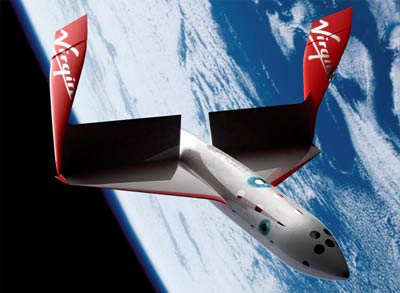Space tourism and carbon dioxide emissionsby Steven Fawkes
|
| If companies don’t deal with this issue they will face two real business risks, the first being the possibility of excessive regulation in this area and, secondly and probably more threatening, the risk of environmental activists taking direct action to stop operations. |
Space tourism companies need to document the carbon dioxide emissions resulting from their flights and supporting operations in a holistic way. Initial calculations by the author (to be published later in the year) show that a typical suborbital flight using technology similar to the Bristol Spaceplanes Ascender will produce three tonnes of carbon dioxide per flight per passenger. This is equivalent to a London to Singapore return flight. Virgin Galactic has recognized the issue and stated that their spaceport will use renewable energy and may even be a net energy producer, which could make it “carbon negative”. It has also stated that its suborbital flights will have emissions equivalent to a London to New York business class flight. (See “A sneak peek inside SpaceShipTwo”, The Space Review, October 2, 2006) It is not clear what the basis of using “business class” in this context is and there is a need for all operators to have emissions calculations independently verified and made transparent. This is particularly important for Virgin Galactic as Richard Branson has made a very public commitment to reducing emissions both by investing in alternative fuels and sponsoring a climate change prize.
It is interesting to look at the effects of scaling up the suborbital space tourism industry. A recent study by Futron predicted up to 852 flights a year out of the New Mexico spaceport. If we assume 3,000 flights a year with 6 passengers on each and 3 tonnes of emissions per passenger, the total emissions will be 54,000 tonnes a year. For comparison, this is equivalent to 5 days operation of a 500MW gas-fired power station, or 3 days of UK consumers leaving electrical items such as TVs on standby. It should also be compared to British Airways emissions in 2005 of 16,132,000 tonnes, resulting mainly from flight operations.
A calculation for the carbon dioxide emissions of an orbital trip to the ISS on a Soyuz launcher suggests the emissions are 143 tonnes per passenger. Clearly any scaling up of orbital tourism will not use Soyuz technology.
| The costs of offsetting are insignificant compared to the cost of a suborbital flight and operators should consider making the whole experience “carbon neutral” to offset potential criticism or opposition. |
Having recognized the issue, what should space tourism operators do? As the industry is starting from scratch it represents a good opportunity to incorporate sustainability and climate change issues into operations from the start. Companies need to calculate their total emissions from flights, transport, day-to-day operations including training, and their supply chains, and then be perfectly transparent with this information. They then need to reduce energy consumption and carbon emissions wherever possible in ground operations through the incorporation of energy-saving features and renewable energy systems. They also need a strategy to offset the residual carbon dioxide emissions. There are two options for offsetting: buy carbon allowances from a recognized scheme such as the EU Emissions Trading Scheme (ETS) and retire them, or use a carbon offsetting company. The carbon offsetting industry is growing rapidly and to date has no agreed or regulated standards. Essentially offsetting consists of paying a fee per tonne of carbon, which is then invested in projects either to plant trees or invest in renewable energy projects. Forestry projects are coming under increasing criticism as being ineffective and should be avoided. Any company considering offsetting would be advised to go down the route of buying credits in a recognized scheme such as the EU ETS or ensuring that any funds routed through offset companies are invested in projects that result in additional carbon saving over and above what would have happened anyway. The costs of offsetting are insignificant compared to the cost of a suborbital flight and operators should consider making the whole experience “carbon neutral” to offset potential criticism or opposition.
Clearly the space tourism companies face many challenges in the coming months and years developing, testing and flying vehicles safely on a commercial basis. The issue of climate change, however, is here to stay and if any company fails to recognize it and act accordingly they will be taking a significant business risk.
